Here's a classic way to use chanterelles mushrooms in a sauce. It's a simple, creamy chanterelle sauce made with skyr, creme fraiche, or sour cream.
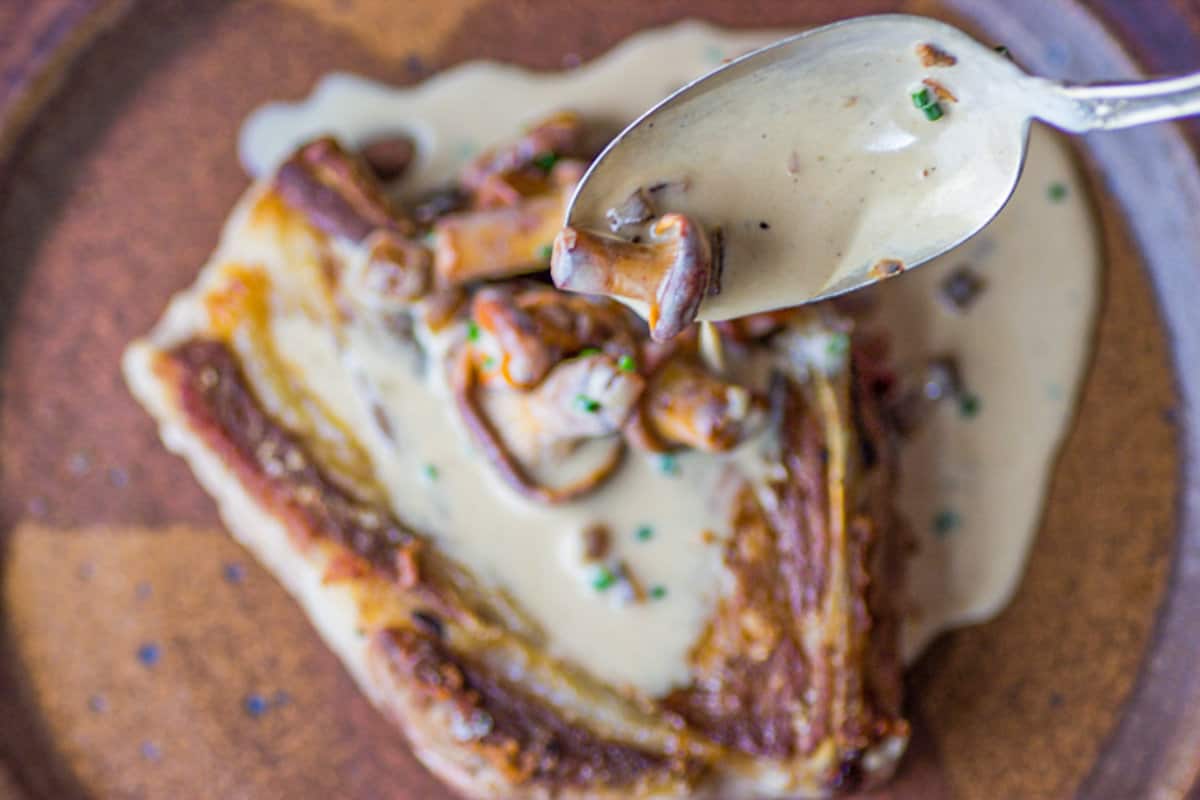
Skyr is somewhere in between yogurt and cheese, the difference is that skyr includes a bit of rennet in the mix, an enzyme from an animal's stomach with causes things to curdle. It's creamy and thick, like sour cream, but with a bit of a different flavor; it definitely has a "cheesy" quality to it.
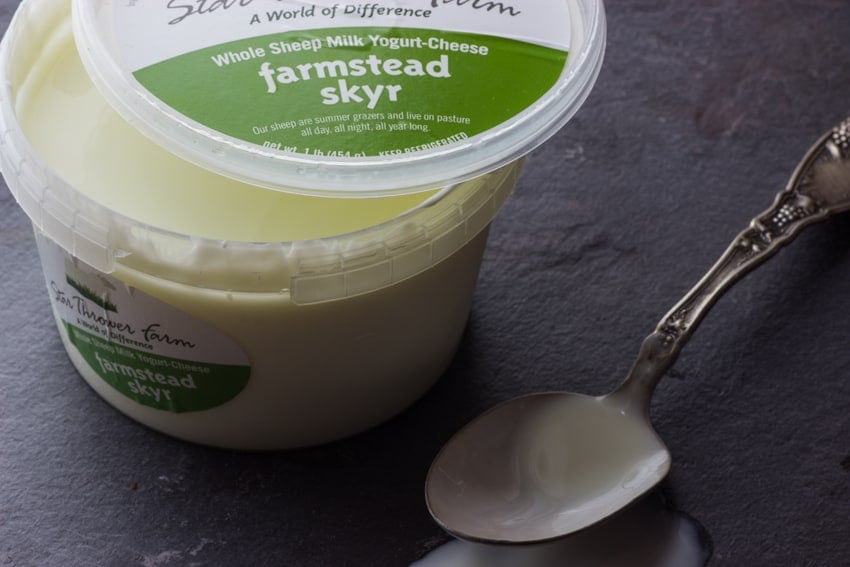
Most of the skyr available in retail markets is made from a mixture of cow's milk. Over at Star Thrower Farm in Glencoe Minnesota, it's made with pure sheep milk, and I would expect nothing less from Scott Pikovsky, owner of the farm and sourcing genius behind Great Ciao in Minneapolis.
Mangalitsa Pork
Mangalitsa is one of the kings of heirloom pigs. The meat is well marbled since they're grown for their lard; they have a layer of fat on their back so big it deserves it's own zip code. Sidenote, I made The Mangalitsa bacon a few years ago and it was a fire hazard.
It goes without saying Mangalitsa yield a decadent pork chop. Mangalitsa can be tough to find, but, duroc, ossabow, swabian hall, berkshire, and red waddle breeds are all excellent too, and are less fatty.
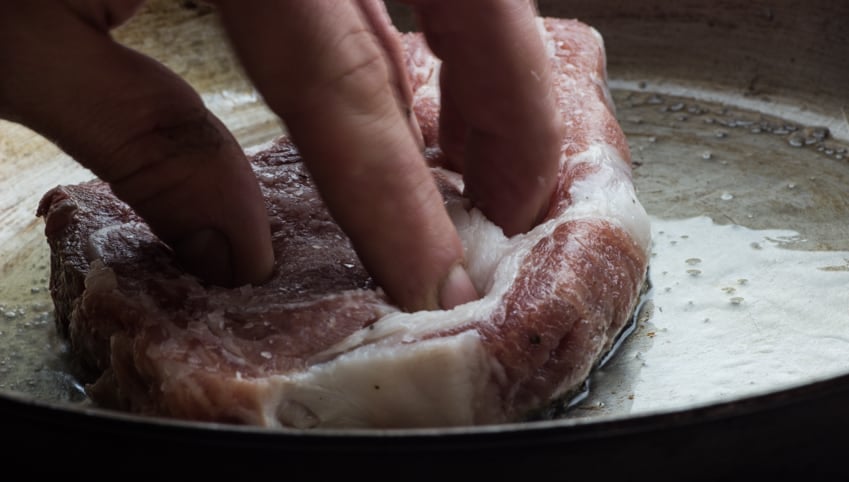
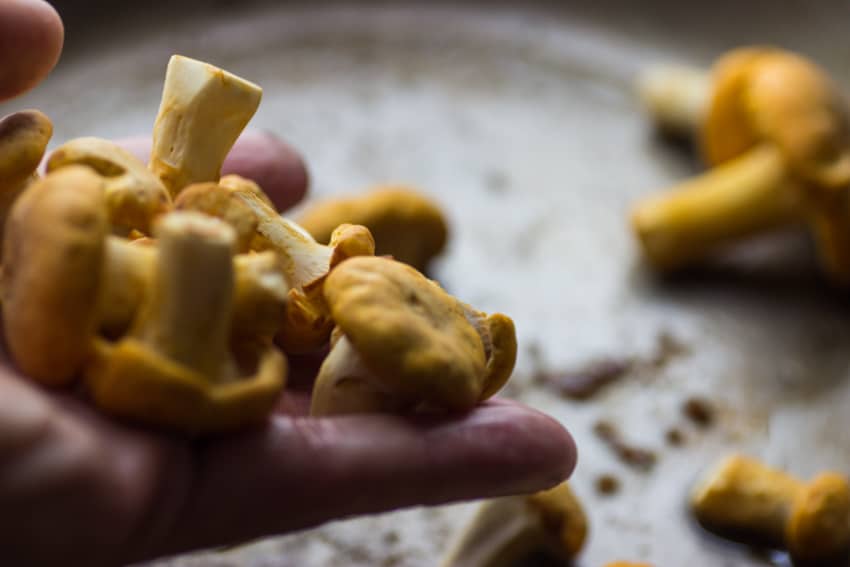
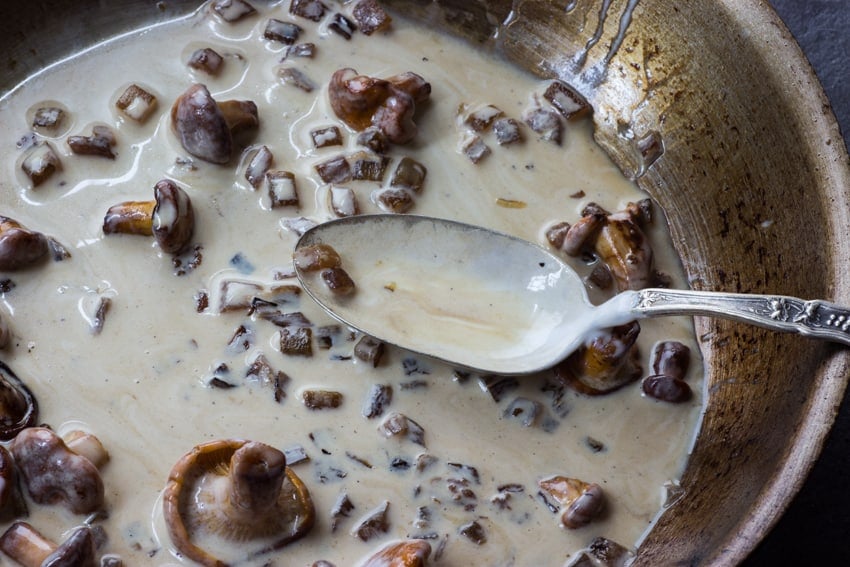
In all reality, this is just a simple golden chanterelles sauce, the meat and accompaniments could be changed according to what you have on hand, I served it with some roasted potatoes tossed with minced cow parsnip leaves, but you could use whatever you want.
Substituting black trumpet mushrooms for chanterelles is also a great variation.
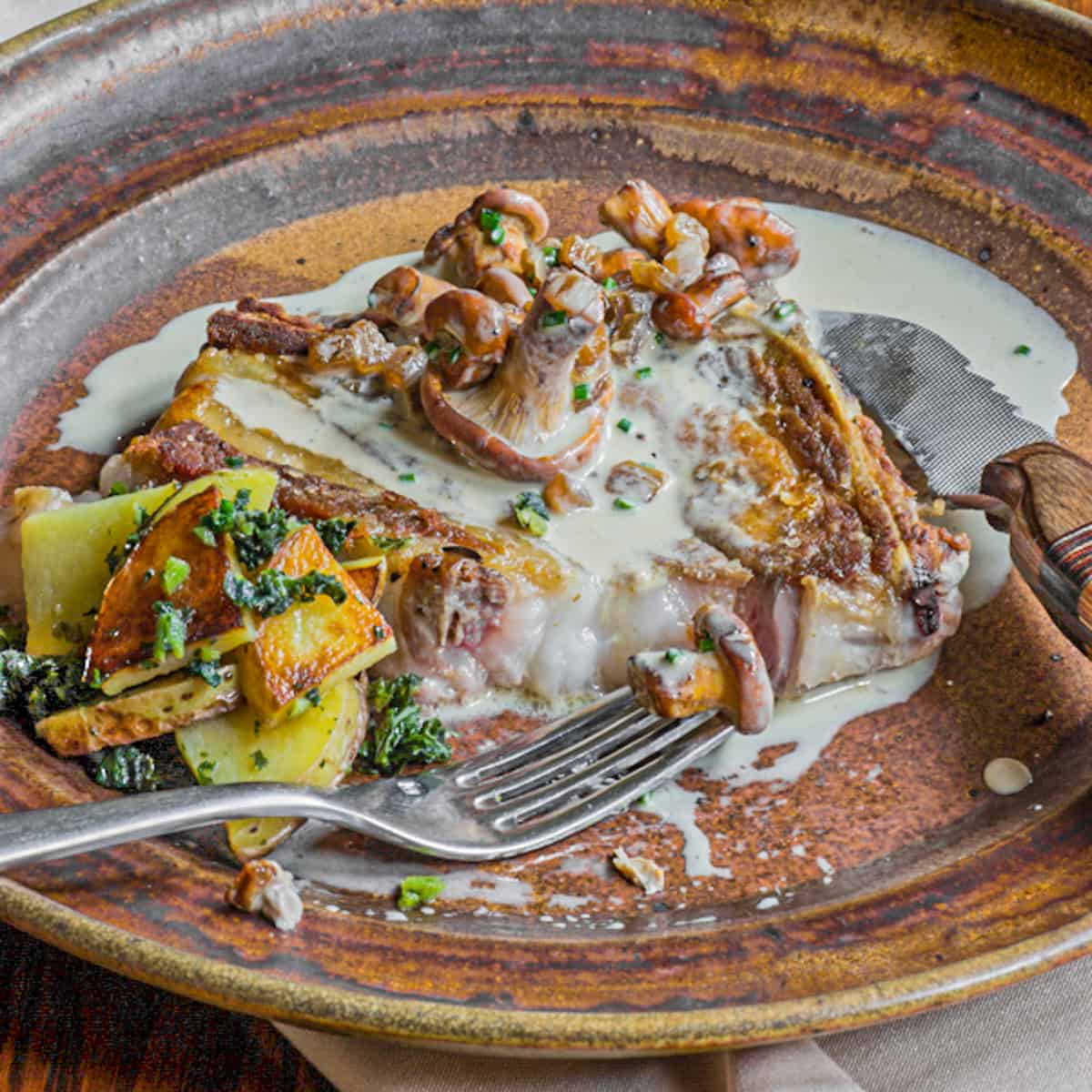
Related Posts
Chanterelle Omelette aux Girolles
Wild Mushroom Conserve (Pickled Mushrooms)
Mangalitsa Pork Chops With Chanterelle-Skyr Sauce
Equipment
- 1 10 inch saute pan
Ingredients
- 2 bone-in mangalitsa pork loin chops, about 8 oz each
- 6 ounces fresh chanterelles cleaned
- ¼ cup shallot diced ¼ in (sweet yellow onions could be substituted)
- ½ cup meat or vegetable stock
- ¼ cup dry sherry
- ½ cup sheep skyr sour cream or creme fraiche can be substituted
- Kosher salt and pepper to taste
- Grapeseed oil lard or another high smoke point oil for sauteing
- tablespoon fresh snipped chives to garnish
- 1 teaspoon all purpose flour
Instructions
- Preheat the oven to 250 degrees. Heat two tablespoons of the oil or lard until lightly smoking in a saute pan big enough to hold both pork chops. Season the pork chops with salt and pepper and then sear well on high heat, pressing down on them when you put them in the pan with a spatula to ensure an even, golden sear.
- When the chops are golden brown, flip them over just to "kiss" the other side, then remove the chops to the preheated oven while you prepare the sauce.
- Wipe out and remove any oil from the pan, but leave any remaining brown bits, add two more tablespoons of the oil and saute the chanterelles for 5 minutes on medium high heat until lightly colored. Add the shallot or onion and cook for 5 minutes more. Add the flour and stir.
- Next add the sherry to the pan and cook until nearly evaporated, about 2-3 minutes. Add the stock to the pan and cook until nearly evaporated, about 2-3 minutes. Finally add the skyr and swirl to combine in the pan.
- Heat the sauce on the lowest heat to warm it through. Do not allow it to boil. if the sauce gets too thick, add a tablespoon of water at a time and swirl to return it to the desired consistency. Taste the sauce for salt and pepper and adjust if needed. Add the chives to the sauce at the last minute.
- Remove the pork chops from the oven, they should be about medium-medium well by this time. Transfer the chops to a preheated dinner plate, golden side up, top with some of the sauce, and serve immediately.


Michele
This was amazing! Like a dish served at the finest restaurant (only much more generous with the mushrooms than you would get at a restaurant) The aroma and flavor of the sauce was so good! I can’t wait to try it with black trumpets too… they are just starting to come on!
Joanna
I am literally salivating, reading this recipe!!! Amazing! I need to go and get some chanterelles!